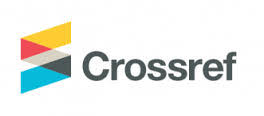The Effect of Multiple Choice Test Modality (Paper, Electronic) on the Test Psychometric Properties and the Item Parameters of the Test Utilizing Item Response Theory
DOI:
https://doi.org/10.59759/educational.v3i4.837Keywords:
Item Response Theory, Test Psychometric Properties of the Test, Item ParametersAbstract
The objective of this study was to investigate the effect of multiple choice test modality (paper, electronic) on the test psychometric properties and the item parameters of the test utilizing item response theory. To achieve this objective, an achievement test was constructed consisting of (25) items of multiple choice with four alternatives. The test was applied on the two samples of the study ( a sample got a paper test, while the other got an electronic one). Each sample had (500) examinees (250 examinees for each test form) from the eight basic grade in the Directorate of Education Kasabat Al-Mafraq in the second semester of the academic year 2023/2024.). The assumptions of the Item Response Theory were verified: unidimensionality and local independence for the two test forms. The data was analyzed using BILOG-MG3, and the analysis showed that item 19 in the paper test and item 22 in the paper test did not fit the model used (three-parametric model), so that the test in its final form consisted of (23) items. The results showed that there were no statistically significant differences due to the test form (paper, electronic) . It was also shown that the difficulty value of the information function provided by the test presented electronically is higher than the test presented on paper. It was also found that there were no statistically significant differences in empirical reliability coefficients between the two methods of presenting the test, and that there were no statistically significant differences at the significance level (α = 0.05) between the averages of the parameters of difficulty, discrimination, and guess, according to the three-parameter model, due to the difference in the method in which the test was presented. The researchers recommended presenting the teste electronically as it has some qualities such as saving time and effort, as well as the efficient psychometric properties for the test and the items.
Downloads
References
Albanese, M. A & ,. Forsyth, R. (1984). The one- tow and modified two parameter latent trait models: An empirical study of relative fit. Educational and psychological Measurement, 44, 229-246.
Bennett, R. E. (1999). Using New Technology to Improve Assessment. Educational Measurement: Issues and Practice, 18 (3),5–12.
Embretson, S. & Reise, S. (2000). Item response theory for psychologists. New Jersey: Lawrence Erlbaum Associates.
Fraser, C., & McDonald, R. P. (1988). NOHARM: least squares item factor analysis.Multivariate Behavior Research, 23: 267-269.
Hakstain, A.R & Whalen, T.E.(1976). A K-sample significance test for independent alpha coefficients. Pyschometrika, 41,219-231.
Hambleton, R., K.(1994). Item Response Theory: A broad psychometric framework for measurement advances. Psicothema,6, 535-556.
Hambleton, R., & Swaminathan, H. (1985). Item Response Theory: principles and Applications. Boston: Kluwer–Nijhoff publishing.


